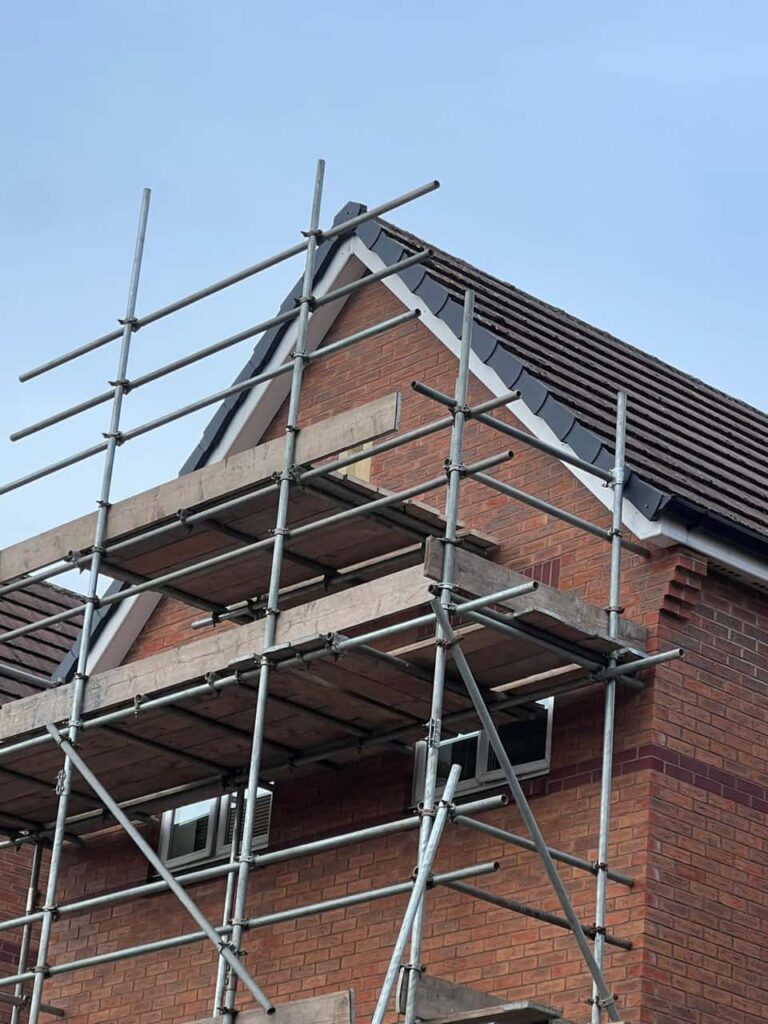Liquid roof covering has become a popular choice for homeowners looking to add a waterproof, durable layer to their roofs. With its ability to create a seamless, weather-resistant membrane, liquid roof covering offers numerous advantages. However, the question of whether to apply it yourself or hire professionals can be a challenging one. At Wigston Roofing Repairs, we frequently receive enquiries from homeowners in Wigston, Nottinghamshire, wondering if DIY liquid roof covering is a wise decision or if professional installation is the safer and more effective route. In this post, we’ll explore the risks and considerations of DIY liquid roofing to help you make an informed choice.
Understanding Liquid Roof Covering
Liquid roof covering, or liquid-applied membrane, is a coating that is brushed, rolled, or sprayed onto the roof’s surface. Once cured, it forms a waterproof barrier that protects against leaks, UV damage, and temperature extremes. It’s highly versatile, compatible with various roof types, including flat and low-slope roofs, and suitable for materials like concrete, metal, and bitumen. The appeal of liquid roofing is its flexibility and longevity; however, the quality of the application plays a significant role in its effectiveness.
The Challenges of DIY Liquid Roof Application
- Preparation and Surface Assessment
Proper preparation is essential for effective liquid roof application. This involves thoroughly cleaning the roof, removing debris, and ensuring that the surface is dry and free from contaminants. Additionally, it’s crucial to assess the roof for underlying issues, such as structural weaknesses or existing leaks, that could affect the performance of the liquid covering. Without professional assessment, DIY applications may overlook these critical factors, leading to poor adhesion or incomplete coverage.
- Correct Application Techniques
Liquid roofing materials need to be applied in a uniform, even layer to ensure full protection. Achieving an even spread without gaps, air bubbles, or streaks requires practice, precision, and specific tools. Inexperienced application may result in thin or uneven areas, compromising the integrity of the waterproof layer. Furthermore, some liquid coatings require multiple layers or precise drying times between coats, making the application process more complex than it may appear.
- Understanding Weather Conditions
Timing is crucial in applying liquid roof covering. The weather must be dry, with no rain or extreme temperatures, to allow proper curing. Even minor changes in weather can disrupt the process and lead to inadequate bonding, especially if humidity levels are high. Professionals monitor weather conditions carefully to ensure optimal application, but for DIY enthusiasts, weather changes can create unexpected issues, potentially requiring a reapplication.
- Product Knowledge and Selection
Liquid roof coatings come in different formulations, including polyurethane, silicone, and acrylic, each with unique properties and requirements. Choosing the right product depends on the roof type, weather exposure, and specific needs. Professionals are well-versed in selecting the most appropriate coating for a particular roof, ensuring longevity and performance. DIYers may not have access to the same quality products or may select a less suitable option, risking durability and effectiveness.
- Safety Concerns
Working on a roof presents inherent risks, especially without the right equipment or experience. Applying liquid roof covering often involves accessing high areas and handling chemicals, both of which require safety precautions. Professionals have the necessary safety training and equipment, reducing the risk of accidents or injuries. For homeowners, a DIY approach could lead to potential hazards, including slips, falls, or exposure to fumes.
Potential Consequences of Poor Application
A liquid roof covering applied improperly may lead to several issues that can be costly and time-consuming to rectify:
- Water Leaks and Damage: Inconsistent application can leave gaps or thin spots where water may seep through, leading to leaks that compromise the roof’s integrity and cause interior damage.
- Reduced Longevity: Poor application can lead to early deterioration, reducing the lifespan of the liquid covering and requiring more frequent repairs or reapplications.
- Void Product Warranties: Some manufacturers offer warranties on liquid roof coatings, but these are often voided if the application is done improperly or not by a certified professional.
Benefits of Professional Liquid Roof Covering Installation
- Precision and Quality Assurance
A professional team brings experience, precision, and the necessary tools to ensure a flawless application. Experts understand the nuances of liquid roof covering, from surface preparation to drying times, resulting in a seamless, durable layer that provides maximum protection.
- Access to High-Quality Products
Professionals have access to industry-grade liquid coatings that are often superior in quality to those available for DIY applications. These products offer better durability, flexibility, and UV resistance, ensuring a longer-lasting solution.
- Time Efficiency
A professional team can complete the application quickly and efficiently, minimising disruptions and ensuring a timely result. For homeowners, DIY liquid roofing may take longer and could be delayed by unforeseen issues, leading to further inconvenience.
- Safety and Compliance
Roofing professionals are equipped with the necessary safety gear and follow strict safety protocols. They also adhere to local regulations and best practices, ensuring a safe, compliant installation.
Conclusion
While DIY liquid roof covering may seem like a cost-effective solution, the risks and challenges associated with improper application often outweigh the potential savings. Inadequate preparation, uneven application, and limited product knowledge can lead to issues that compromise the roof’s protection, leading to costly repairs in the future. At Wigston Roofing Repairs, we offer professional liquid roof covering services in Wigston, Nottinghamshire, delivering reliable and durable results that provide peace of mind for homeowners.
If you’re considering liquid roof covering for your property, contact Wigston Roofing Repairs today. Our experienced team is here to provide expert guidance and a seamless application, ensuring your roof is fully protected for years to come.
Call us on: 0116 464 7498
Click here to find out more about Wigston Roofing Repairs
Click here to complete our contact form and see how we can help with your roofing needs.

